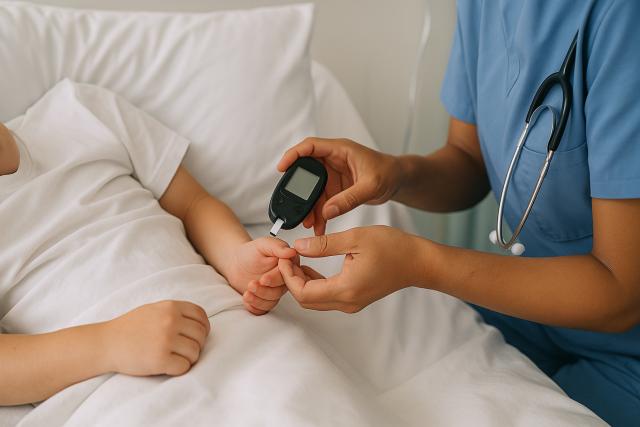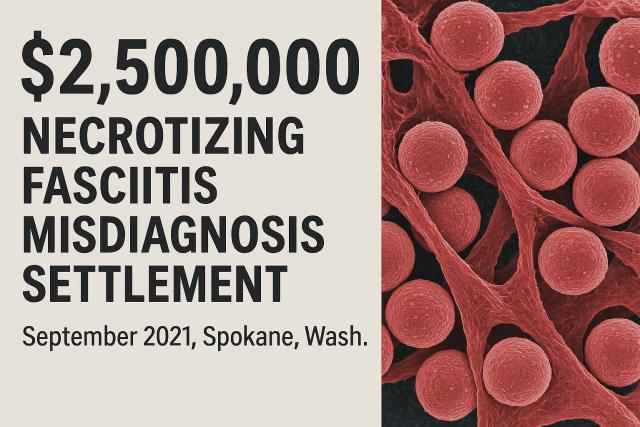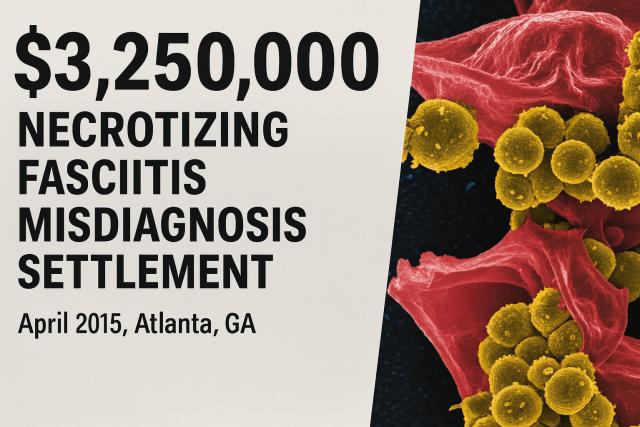Pediatric Respiratory Infections and Child Respiratory Illness
Respiratory infections in children can range from common colds to serious ailments that demand swift treatment. Many parents feel uncertain about whether a cough or fever signifies something minor or a more troubling condition. Knowing which warning signs require prompt attention helps reduce potential complications for pediatric respiratory infections. We at Davis Adams, an award-winning medical malpractice law firm in Atlanta, share these insights so families stay informed about child respiratory illness and possible legal considerations.
Our goal is to highlight how respiratory infections in children often present and why medical vigilance matters. Readers with particular questions or concerns should consider consulting qualified healthcare professionals to determine appropriate next steps for their child.
Common Respiratory Infections in Kids
Several conditions frequently crop up among pediatric infections. Croup typically produces a barking cough that can alarm parents at night. Bronchiolitis, often caused by RSV, affects infants who struggle with rapid breathing or wheezing. Meanwhile, pneumonia may have different severities, ranging from mild to quite serious. According to CDC estimates, RSV hospitalizes roughly 58,000 children under the age of five in the United States each year, underscoring the significance of careful monitoring.
Identifying Symptoms of Respiratory Infections in Children
Persistent cough, unusual wheezing, and a high fever stand out as red flags. Some children show labored inhalation, sometimes referred to as chest indrawing or skin pulling between the ribs. Parents might also see flaring nostrils, which can signal a child’s increased effort to breathe. Recognizing these early indicators can prompt people to arrange timely medical evaluations. If addressed quickly, pediatric breathing issues can often be remedied before they progress.
Potential Complications from Delayed Treatment
Untreated respiratory infections in children sometimes lead to extended hospital stays or chronic lung troubles. Early detection offers significant benefits, including better outcomes and a greater likelihood of avoiding severe complications. Parents who notice no improvement—or a worsening of symptoms—should remain alert and reach out to a healthcare provider for additional guidance.
Misdiagnosis and Medical Negligence in Pediatric Cases
When a child’s pneumonia is mistaken for a simple cold, the child’s condition could rapidly deteriorate. In cases involving questionable care or overlooked clinical signs, legal counsel may evaluate whether malpractice occurred. For instance, if a hospital dismisses symptoms without proper tests, such as a chest X-ray, and sends a child home prematurely, that raises concerns about whether the standard of care was met. In Georgia, families can pursue legal action if negligent treatment leads to harm.
These considerations become especially important if a child’s condition intensifies soon after discharge. Seeking a second look or contacting a legal professional could help determine if errors in care contributed to the setback.
When to Seek Medical Attention for Child Respiratory Illness
Signs such as intensifying fever, pronounced coughing, or especially rapid breathing signify a need for immediate assessment. Very young children can take a sudden turn if crucial interventions are postponed. In many cases, obtaining reassurance from a doctor helps prevent unwelcome surprises. Should symptoms fail to lighten or if a child appears fatigued and dehydrated, scheduling a follow-up appointment is wise.
No parent should feel hesitant about returning to their provider if the illness persists or evolves. When a child’s state does not align with a typical cold, it’s better to err on the side of caution.
Advocating for Thorough Medical Evaluation
Requesting tests such as chest X-rays or blood work can provide clarity on the cause of a child’s respiratory distress. Parents best serve their families by insisting on enough evidence to confirm or rule out pneumonia or other severe ailments. This proactive stance aids in detecting red flags before complications escalate.
Quick responses from healthcare teams, supported by well-considered evaluations, often yield faster recoveries and reduce stress for guardians.
Recognizing Signs of Respiratory Distress
- Fast breathing, visible pulling of the chest, flared nostrils, and bluish lips can signify insufficient oxygen intake. Such indicators should prompt parents or caregivers to seek urgent support. Spotting these warning signals early may spare a child from enduring further harm.
Understanding the Impact of RSV in Infants
- RSV commonly leads to bronchiolitis in babies, especially those younger than one. Easily spread among children, it can cause breathing problems that peak quickly. Early awareness of RSV risks allows providers to stabilize vulnerable infants and minimize hospital stays.
- Premature infants or those with certain health complications sometimes require stricter monitoring during RSV season. Careful observation can make a large difference in outcomes.
Preventive Measures for Respiratory Infections
- Vaccinating children when appropriate, practicing good hand hygiene, and limiting contact with sick people are key details that can diminish germ transmission. At daycare or school, consistent cleanliness cuts down on the spread of common respiratory infections in kids. These simple steps can help shield families from serious repercussions.
Legal Implications of Medical Malpractice in Pediatric Care
- If healthcare workers fail to identify or treat respiratory infections in children in a timely manner, legal issues may arise. When medical personnel overlook significant symptoms, families have grounds to consider possible negligence. In many instances, a consultation with an attorney can shed light on whether a provider acted within the accepted standard of care.
Davis Adams focuses on helping Georgia families navigate such scenarios, supporting those who believe their child’s respiratory care fell short of expected practice.
Role of Healthcare Providers in Managing Pediatric Infections
Clinicians and support staff should always be thorough when examining a child with respiratory complaints. Comprehensive test results and consistent follow-up benefit families by catching evolving concerns right away. When providers take the time to assess a child’s full clinical picture, unnecessary complications diminish.
Educating Parents on Respiratory Health
Families who understand the differences between mild and urgent infections can better protect their children. Recognizing respiratory distress early, as outlined above, decreases the likelihood of a child falling seriously ill. Resource materials from credible sources, including the CDC, also serve as valuable references.
Importance of Timely Medical Intervention
Seeking immediate support often accelerates recovery, avoids extended hospitalizations, and limits lasting consequences. For any unresolved concerns about a provider’s approach, speaking up swiftly holds practitioners accountable. In certain circumstances, that step makes a decisive impact on a child’s prognosis.
Guidance on Key Pediatric Infections
Croup’s signature barking cough, bronchiolitis in infants, and pneumonia in children all warrant close observation. Parents who notice nuances such as labored breathing or a high fever should step up medical checks. Evaluating changes in energy level, appetite, or alertness helps determine the severity of pediatric breathing issues.
Distinguishing Common Cold from Serious Conditions
A typical cold might involve a runny nose, mild cough, and slight fever. When more disruptive symptoms like wheezing or rapid breathing manifest, they can point to pneumonia or RSV. Caregivers are encouraged to remain persistent in seeking answers if a child’s illness doesn’t improve.
FAQs for Pediatric Respiratory Infections
-
- What are the common symptoms of respiratory infections in children?
Coughing, fever, difficulty breathing, and potential wheezing are frequent signs. - When should I take my child to the doctor for a respiratory infection?
Consult a healthcare provider if your child’s symptoms appear severe, if high fever persists, or if breathing becomes increasingly strained. - Can respiratory infections in children lead to hospitalization?
In some cases, yes. Younger children, especially infants, may need inpatient care to stabilize serious infections. - How can I prevent my child from getting respiratory infections?
Encourage clean hands, vaccinations, and reducing contact with those who are sick to lessen the spread of respiratory infections in children. - What should I do if I suspect medical negligence in my child’s care?
Speaking with an experienced legal professional can help clarify whether a provider failed to meet expected standards.
- What are the common symptoms of respiratory infections in children?
By staying watchful for abnormal symptoms and seeking timely interventions, parents can better protect their children. Davis Adams remains devoted to offering insight and guidance to those who think their child may have been affected by a provider’s oversight. Ultimately, vigilance and proactive steps bring reassurance and a greater chance of a positive outcome for child respiratory illness concerns.




